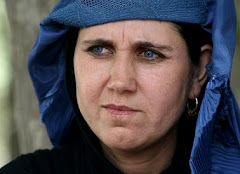 A week ago I was in Kandahar, a city at the center of the conflict in Afghanistan. Gen. Stanley McChrystal, the head of U.S. and NATO forces in Afghanistan, has said that Kandahar will follow the recent offensive in Marjah, Helmand, just next door, in June as the next stage of operations. He has suggested that a "win" there would turn the tide in Afghanistan.
A week ago I was in Kandahar, a city at the center of the conflict in Afghanistan. Gen. Stanley McChrystal, the head of U.S. and NATO forces in Afghanistan, has said that Kandahar will follow the recent offensive in Marjah, Helmand, just next door, in June as the next stage of operations. He has suggested that a "win" there would turn the tide in Afghanistan.Such a message should be a relief to citizens in Kandahar, who have long been working and living on the frontlines, their city a daily battleground for control between insurgents, the internationally-backed Afghan government, and criminal militias. But for many of the civilians I spoke to, the prospect of further operations in Kandahar inspires terror.
Though the operations in Marjah were touted as a success, particularly to the extent that they limited civilian casualties, citizens in Kandahar have a different view. They saw the thousands of refugees from Helmand fleeing to Kandahar, the vast majority still living in squalid camps on the outskirts of Kandahar or Lashkar Gah with barely enough food and shelter to survive, and unable to return because their communities are heavily mined, and still infiltrated by Taliban engaged in retaliatory abuses against the population.
The sad thing is that such experiences are not foreign to Kandaharis. The focal point of the conflict for the last several years, Kandaharis have seen time and again that when conflict comes to their doors, they are largely left to their own devices to pick up the pieces. There are humanitarian agencies operating in Kandahar, but with limited access due to security, and a shortfall of resources given the scope of the humanitarian crisis in the south. Not only does Kandahar have its own victims of the conflict to deal with, but it also serves the millions of conflict-affected civilians across the volatile southern region seeking urgent medical care or refuge from fighting.
Kandaharis expect the situation will only get worse with promises of fresh coalition operations. If insurgents plant even a fraction of the IEDs that were planted in Marjah in the Kandahar City area, they will cause immediate harm to civilians and cut off what is for many in the south the last resort for humanitarian care.
Since General McChrystal took charge last July, there has been a renewed focus on protecting the Afghan population in conflict areas. The new counterinsurgency logic is that only by stabilizing communities can you deny the insurgents a safe haven. U.S. and NATO forces have implemented this 1) by restraining force activities likely to cause harm, and 2) by trying to support governance, rule of law, and other "stabilization" activities once operations have happened.
These are both important steps, but they are not enough to stabilize the south. First, protecting the population means not harming the population. It also means ensuring that no one else harms the population either. So far, the internationally-backed Afghan government has not been able to guarantee that: not in Marjah, not in Kandahar, not in other "focal" points for operations.
Second, good governance and rule of law can only go so far when the most basic humanitarian needs of a population are not met. Civilians who are struggling for basic shelter, food, and medical care for months at a time are not going to be "stabilized" by the announcement of new governors or the development of civilian control centers. Law and order is necessary for long term stability -- but in the short term, expecting civilians who have been on a race for basic survival for the last few years to pick themselves up and rebuild without any assistance simply will not happen.
Unless greater attention is given to the basic security and humanitarian dilemmas that civilians in Kandahar face daily, new operations there cannot succeed.
Erica Gaston is a human rights lawyer based in Kabul, Afghanistan, consulting on civilian casualties issues for the Open Society Institute.
AFPAK

.jpg)




0 نظرات:
Post a Comment